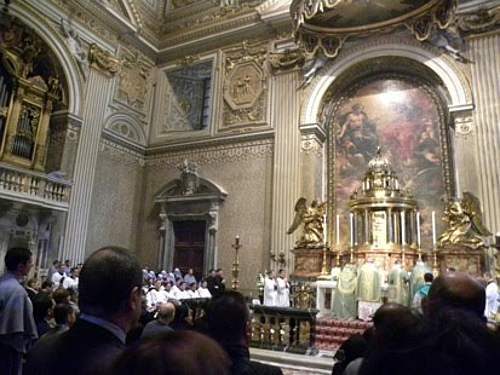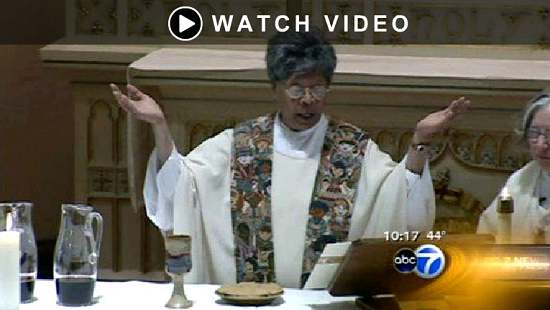Damian Thompson har besøkt en kirke et sted i England, og han likte aboslutt ikke det han så. «Ikke mer polyester«, er hans avsluttende setning:
Recently I attended a Catholic service in a church, and a diocese, which shall remain nameless. This is not because there is anything scandalous to report, but because I’m about to compare it to a 1970s department store and I don’t want the priest to cancel The Catholic Herald.
The church was (I would guess) Victorian Romanesque, or maybe neo-Gothic – the truth is that it was so nondescript that it didn’t leave much impression. It was very much the sort of church thrown up in large numbers at the end of the 19th century, and I imagine that in its heyday it was bustling, happy and sentimental.
Then, after Vatican II, its interior was modernised. But we’re not talking savage reordering here: just the usual wall-to-wall carpeting of the sanctuary, removal of the altar rails and – unforgivably, not least because it makes a nonsense of the high altar – the removal of the tabernacle to… somewhere. I didn’t even notice; just that it was missing from its place of honour, installing an emptiness at the centre of things. … …
It was the same story in the sacristy. The priest was wearing a double-breasted polyester alb whose top half resembled a chef’s outfit. I didn’t know such a thing existed. The door of the wardrobe was open, revealing a jumble of highly coloured cheap chasubles (also polyester) that could have been mistaken for the women’s clothing rack in an Oxfam shop.
Now, I know this sounds like sneering, and missing the point: the Apostles did not worry about the cut of their fisherman’s clothes, and the Gospel is not about externals: there are churches, especially in the Anglo-Catholic wing of the C of E, where fussing about the embroidery of a chasuble or the choreography of censing the acolytes takes precedence over visiting the sick. (Though, to be fair, some of the most ritualistic parishes are also the most pastorally diligent.)
I’m not saying that the alternative to the shabbiness of this church is to turn it into a mini-Oratory. Nor do I want to suggest that the priest and ministers of Holy Communion in this community are not faithful Catholics.
But what the parish priest and his bishop need to understand is that these things matter: from the collage of outdated posters at the west end of the church to the badly repainted apse at the east, every single item of church art or furniture gives the impression of “making do”. The message: this is just another church. .. …
The culture of mediocrity, of making do, that has pervaded the Catholic Church in England and Wales extends beyond what happens in the sanctuary. Therefore putting things right is a wider project than the more solemn celebration of Mass, which the coming English translation will help to effect, along with the increasing conservatism of new priests. We need to move back to what the Church used to offer – and, significantly, the commercial world is increasingly able to provide to meet rising consumer expectations: a total experience drawing on the highest standards of professionalism in art, architecture and music.
Perfectionism; attention to small details; impatience with the second-rate – these are what we must demand of our pastors and what, in a Church run by Archbishop Nichols and soon-to-be Archbishop Longley, there is now a faint chance of achieving, particularly with a papal visit in the offing. That means no more excuses, no more amiable making do – and definitely no more polyester.


